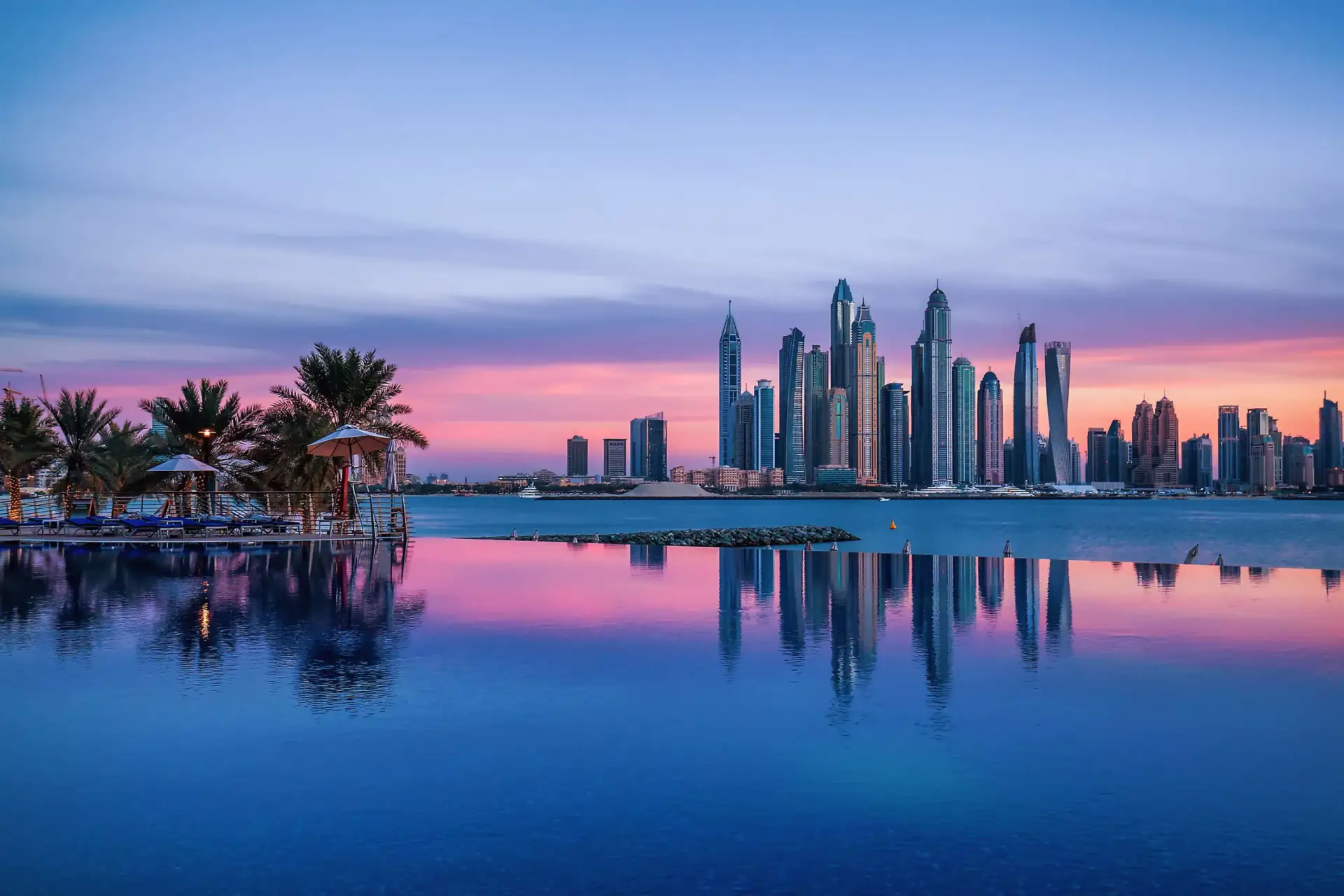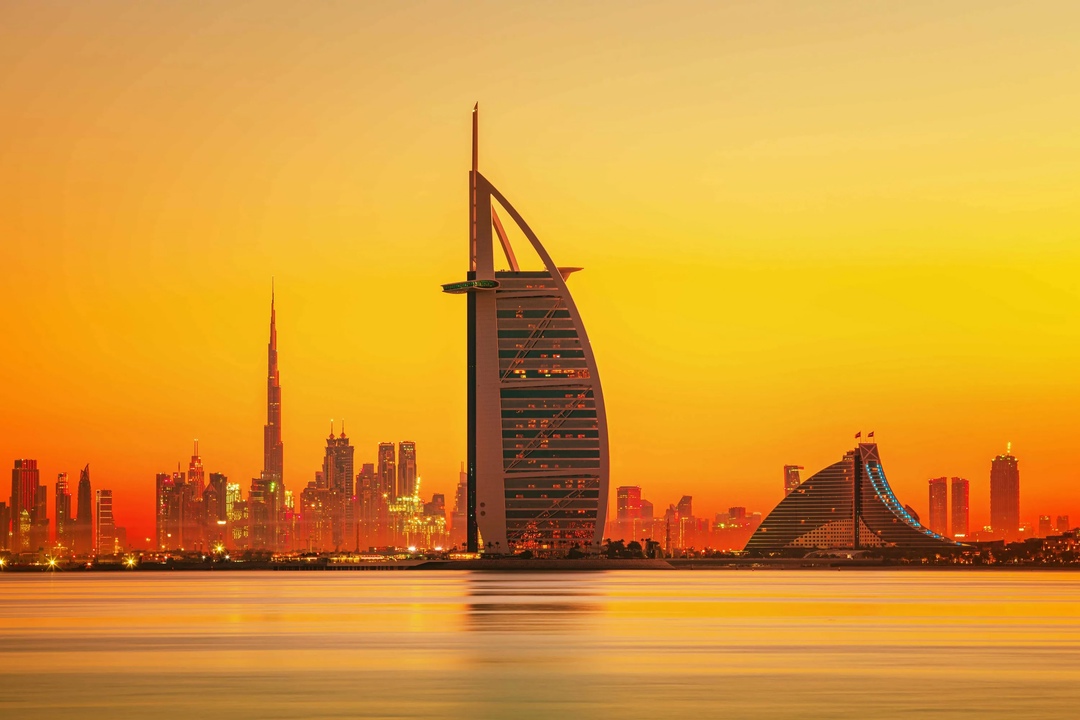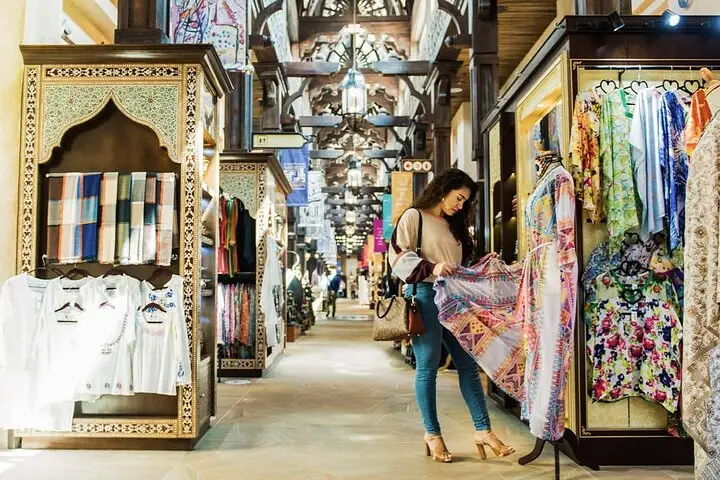Planning a trip to the United Arab Emirates starts not with choosing a hotel, but with understanding the climate. In a country where temperatures can exceed +50°C, seasonality plays a key role. A comfortable journey depends on hitting the right climate period. When to go to the UAE? The traveller needs to find a balance between weather, prices, tourist traffic and desired activities.

Winter: a comfortable peak of tourist interest
The period from the end of November to March shows ideal parameters for holidays. It is at this time that the question of when to go to the UAE gets an unambiguous answer – in winter.
Weather and climate
 Temperatures range from +22°C during the day to +28°C, dropping to +17°C at night. Humidity is kept at 50-60%. Precipitation is rare. The water in the Persian Gulf warms up to +24…+26°C, which makes the winter season suitable for swimming. Winds in Dubai and Abu Dhabi remain light, without sandstorms, and the sky is consistently clear.
Temperatures range from +22°C during the day to +28°C, dropping to +17°C at night. Humidity is kept at 50-60%. Precipitation is rare. The water in the Persian Gulf warms up to +24…+26°C, which makes the winter season suitable for swimming. Winds in Dubai and Abu Dhabi remain light, without sandstorms, and the sky is consistently clear.
Tourism and activities
The winter season coincides with the peak of tourist activity. The resorts of Dubai and Fujairah show maximum utilisation. All excursion destinations are open: desert safaris, fountain shows, night markets, amusement parks, skyscraper observation decks. Beaches remain comfortable from morning to evening and excursions do not require protection from the heat.
Prices and demand
High season creates a price premium on everything from flights to a cup of coffee. The cost of hotel accommodation rises by 30-70% compared to the summer period. Airlines increase the frequency of flights, but they are also fully loaded. If you book less than a month from the start of your trip, access to the best deals is limited.
Suitable for whom
The period is suitable for family trips, honeymoons, trips with children, activity programmes and cultural itineraries. Hotels of all categories welcome travellers. Restaurants are open without restrictions. UAE tours offer extended packages with bonuses.
Spring: warm off-season with a gradual warm-up period
The spring months are a smooth transition from winter comfort to summer heat. From March to May, the climate changes rapidly but remains acceptable for most holiday formats. The question of when to go to the UAE for a balanced holiday without extreme heat is answered in spring.
Temperature and climate indicators
March maintains the winter regime with daytime temperatures up to +29°C and nighttime temperatures around +19°C. In April, temperatures rise to +34°C during the day and +22°C at night. In May, the air stably exceeds +38°C, and humidity can rise to 70%. The water in the bay warms up to +28°C. Bathing remains comfortable until the end of the season.
Seasonal features
March and April are suitable for beach holidays, excursions, sightseeing trips. In May, only morning activities. Safaris start at dawn, parks shift their opening hours. Tour buses are equipped with a cooling system.
Prices and occupancy rates
In March, the winter price bar remains the same. April shows a slight decrease – up to 20% for tours. May is the low season. Hotels in Dubai and Abu Dhabi reduce rates, offer discounts, room upgrades, bonus SPA services. Fujairah resorts start offering early booking promotions.
Target audience
The period is suitable for those who are planning a busy holiday but do not want to overpay. Also for individual travellers and couples. Spring is optimal for photo shoots, gastrotours, short trips. The resorts of Thailand and Maldives compete for the flow, but the UAE maintains stable popularity.
Summer: heat, sales and empty beaches
June, July and August are the months when either experienced travellers or those who are not afraid of the heat decide to go to the UAE. The summer season is not a period for street walks, but it is an excellent time for bargain shopping, privacy and all-inclusiveness.
Climate and temperature
The air temperature is stable in the range of +40…+48°C. At night it is not lower than +33°C. Humidity can reach up to 90%, especially in August. The water in the Persian Gulf becomes too warm – up to +33…+35°C. In Fujairah the situation is milder, but not radically so.
Features of the season
The main emphasis is on hotel infrastructure. Hotels offer cool swimming pools, indoor recreation areas, indoor water parks. Air-conditioned shopping centres, indoor markets, museums are open. Resorts are turning into zones of complete isolation from the outside climate. Safaris and beach holidays temporarily fall by the wayside.
Price reduction
June opens the period of the lowest prices of the year. Hotels reduce their prices by 40-70%, flight tickets by up to 50%. Additional services – as a gift. This is the time of advantageous offers: long tours, combined programmes, business class for the price of economy.
Suitable for
The summer season is suitable for experienced tourists not prone to overheating and for shopping tours. Also – for those looking for quietness, low density of tourists, maximum bonuses. The UAE in summer is a “city in a room” format, not a “beach in the sun”.
Autumn: soft return of comfort and high interest in excursions
September, October and November form the season of climatic stabilisation. After the exhausting heat wave, the air becomes milder, the water loses its overheating and tourist interest grows. Autumn is the transition from low to high season, the time when it is especially reasonable to go to the UAE for the sake of excursion saturation, holidays with children and bargains until the December peak.
Weather and temperature readings
September remains warm but not overheating: temperatures are around +39°C during the day and +29°C at night. Humidity gradually decreases from 80% to 60%. October brings real changes: the air cools down to +34°C, water – to +30°C. November consolidates the comfort: daytime maximum is +30°C, evening maximum is about +24°C, humidity is 50-55%. Such parameters make walks, excursions and evening activities fulfilling and safe.
Leisure and active formats
September is perfect for those who prefer pools over beaches and quiet over crowded tours. October brings tourists back to the shore: beaches, safaris and terrace restaurants come alive. November sees the opening of all the open-air activities: jeep tours, shows, festivals, fairs. Excursions to museums and mosques in Abu Dhabi, evening cruises along the canals, trips to the desert are gaining popularity again.
Prices and congestion
September is the remaining low season: prices are still favourable and offers are varied. October shows an increase in tariffs by 10-20%. November consolidates the upward trend, but is still inferior to December. Hotels start to fill up more actively. Dubai and Abu Dhabi resorts increase animation programmes and open beach areas in full.
Tourist Profile
Autumn is the ideal choice for those who can’t stand the heat but aren’t ready to overpay for a peak. Couples, elderly tourists, travellers with children and connoisseurs of cultural itineraries find this period versatile. When to go to the UAE for a balanced holiday – the answer is again: in autumn, especially in October and November.
Regions and climatic differences: when and where to go in the UAE
Within the country, regions form their own microclimatic peculiarities. Dubai and Abu Dhabi are hotter, while Fujairah is milder due to its access to the Gulf of Oman. Understanding the differences can help you decide when to travel to the UAE for specific purposes.

Climatic differences:
- Dubai is shaping the image of a tourist centre. The hottest region in the country. In July and August, temperatures reach +48°C. The water overheats to +34°C. It is better to go here from November to March. From April to October, the activity shifts inside hotels and shopping centres. Beaches become comfortable only in the early morning and after sunset.
- Abu Dhabi. The climate is similar to Dubai, but the heat is milder due to the lower density of buildings and more open spaces. The best time is from November to March. Spring is less sweltering and autumn is slightly more humid. Safaris, boat trips and gastro tours are particularly popular between October and April.
- Fujairah. The access to the Gulf of Oman provides lower water and air temperatures. In the peak of summer the difference can reach 4-5 degrees. The resort is popular among those who do not tolerate extreme heat. When travelling to the UAE in summer, Fujairah becomes an alternative to other regions. Also, green vegetation and mountain routes are particularly pronounced here.
When to travel to the UAE with maximum benefit and comfort
 The timing of the trip depends directly on the purpose. In winter – ideal conditions for the beach, excursions and walks. Spring – mild climate, moderate prices and busy tours. Summer – minimal costs and maximum privacy. In autumn – a balance between comfort, cost and availability of all forms of recreation. It is not the calendar that decides when to go to the UAE, but the tourist’s request. Each month has its own format, certain advantages and scenarios of holidays.
The timing of the trip depends directly on the purpose. In winter – ideal conditions for the beach, excursions and walks. Spring – mild climate, moderate prices and busy tours. Summer – minimal costs and maximum privacy. In autumn – a balance between comfort, cost and availability of all forms of recreation. It is not the calendar that decides when to go to the UAE, but the tourist’s request. Each month has its own format, certain advantages and scenarios of holidays.
 en
en  es
es  fr
fr  nl
nl  de
de  ru
ru  ar
ar  hi
hi  el
el  it
it  pt
pt 









